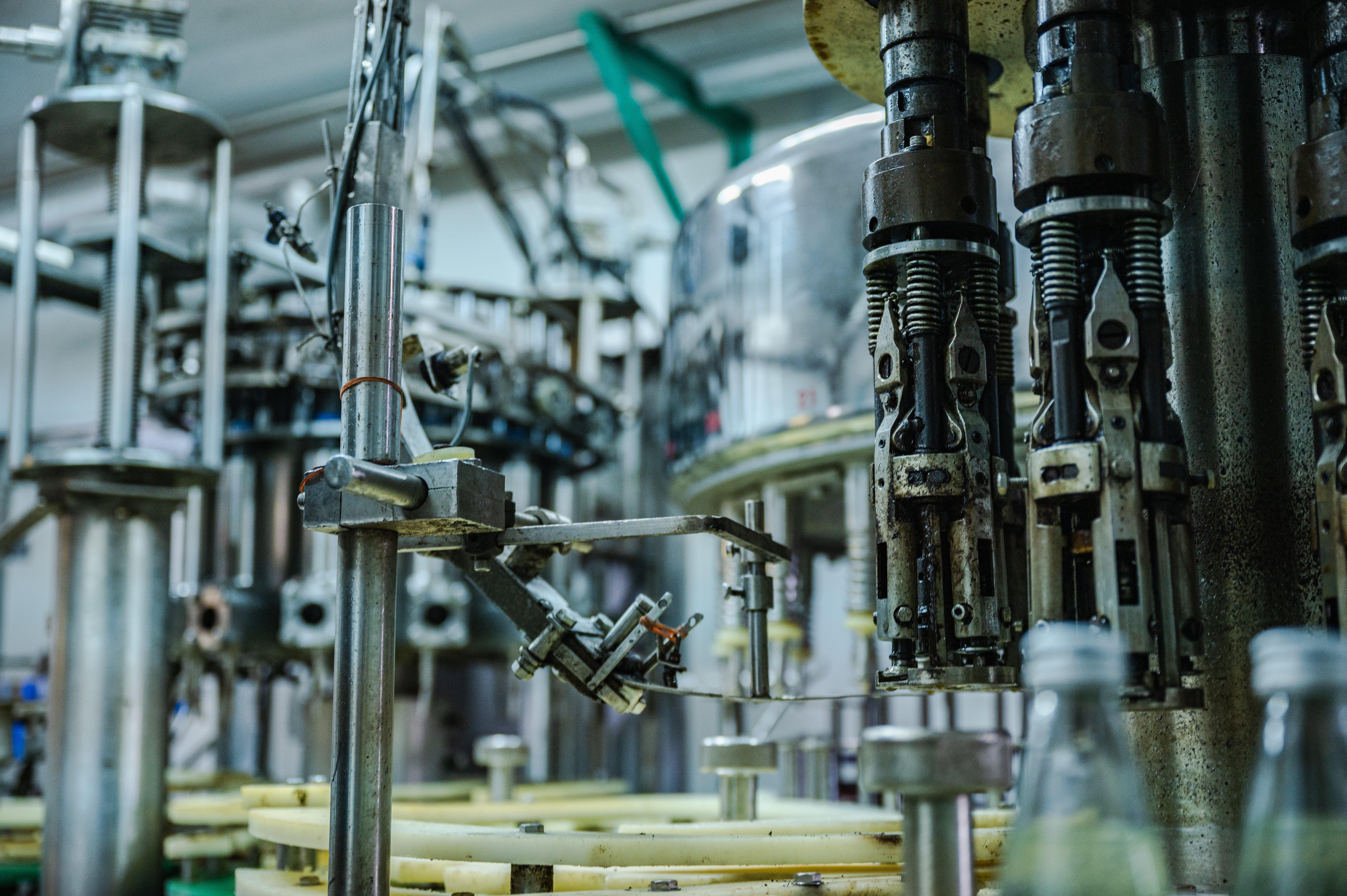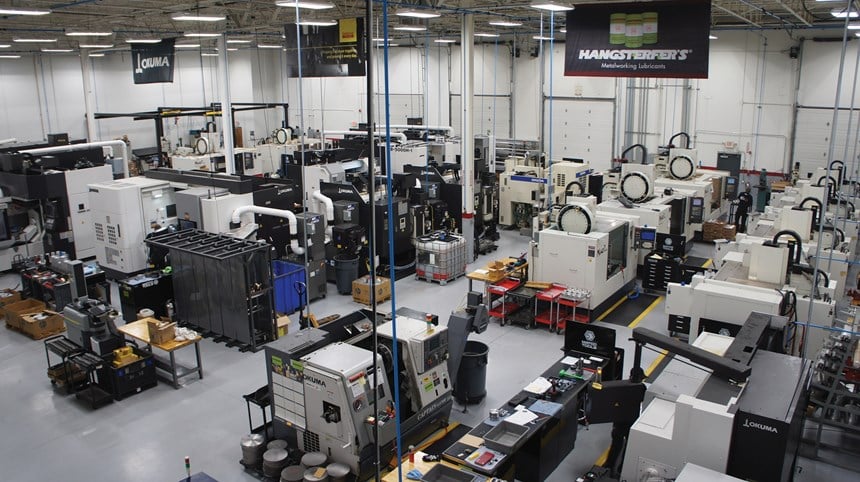13 Factors That Impact the Value of Your Manufacturing Business
Sellers Business Valuation Seller Articles Seller FAQ Valuation
Running a manufacturing business day in and day out can be exhausting. Just like the machines hardly take a break, neither do you.
When it comes time to sell, you’ll want that hard work to amount to something - specifically a high sale price for your business.
A few years ago we performed a valuation for a manufacturing client and it came back lower than they expected. They asked what could be done to improve the value of their business.
The company had high customer concentration with two clients making up more than 40% of their business, two owners (husband & wife) working full time in the business, and their books and records were a mess.
We suggested they focus on backing themselves out of the daily activities and cleaning up their books. If they could reduce their customer concentration, that would help their value, but that it would take several years.
Since each business is different, we have created a list of 13 things that affect the value of your manufacturing company, so you can know how you can increase its value and sell it for a higher price.
Let’s get started.
Valuing a Manufacturing Business
It’s important to note how the factors we’re about to discuss impact the value of your business.
When valuing your manufacturing company, one method used is the Multiple of Earnings Method.
Adjusted EBITDA (earnings) x Industry Multiple = Business Value
We discussed this method in more detail in the blog, How to Value a Manufacturing Business.
One of the questions raised in the blog is why do some companies sell for a multiple of 2.5x while others sell for 5x or more?
Think of the multiple as a measure of risk.
Low risk = higher multiple: Buyers will pay more for businesses they feel can succeed in after the owner steps away. They also feel more comfortable if there are factors in the business they see value in, such as systems/management in place, long-term contracts, etc.
High risk = lower multiple: Buyers will want to pay less for a business when they feel there are considerable risks to their future return on investment (customer concentration, lack of systems, etc.).
Below is a list of specific factors affecting the multiple you would place on your manufacturing business and the earnings of your company.
1. The Size of Your Manufacturing Company
The size of your company has the largest impact on the multiple you use to determine the value of your business.
As the amount of revenue and earnings grow in your business, so does your multiple. Why?
As you go up in adjusted EBITDA, the interest from strategic and private equity buyers increases tremendously.
Additionally, as deal size increases, the number of available opportunities decreases. This causes private equity and strategic buyers to compete for companies and drive up the multiples
Although the SBA 7(A) loan program gives individual buyers greater access to capital, private equity groups and strategic buyers have much deeper pockets than individuals.
Anything you can do to increase the overall earnings of your business will help increase the value of your business in the long run.
2. How Involved You Are in Running The Manufacturing Facility
Are you processing Purchase Orders?
Are you in charge of quality control?
How many people do you manage directly?
Investors often prefer manufacturing companies with managers in place in key departments. They want to be reassured the cash flow of the business won’t dip during their transition into the company.
Unless you’re aiming to stay on as an employee in the business after the sale, the buyer will either need to be your replacement or find a manager to replace your role.
The best way to gauge owner involvement is to ask yourself a simple question. If you don’t show up to work for two weeks, what happens to the business?
NOTE
The easier your job responsibilities are to replace, the higher multiple you will be able to achieve and the easier your company will be to sell.3. The Quality of Your Books & Records
At the time of writing this article, we were working with a business owner who owns an attractive manufacturing business. He kept high-quality records and financials by utilizing an Enterprise Resources Planning (ERP) system.
Part of why this makes the owner’s company so attractive is because during due diligence, we're able to produce accurate financial reports to the buyer quickly.
When it takes a long time to produce financials or organization documents (organization chart and responsibilities, supplier lists, sales by customer, equipment lists, etc.), potential buyers of your business lose confidence.
The owner received a full-price offer for their business. This was only possible because of their hard work of preparing the company for sale.
NOTE
Prospective buyers are usually looking at multiple businesses. If they can't easily assess your financials, they'll be quick to move on to a less confusing opportunity. Bad bookkeeping will kill a deal before it even starts.4. Your Manufacturing Customer Concentration
When an individual customer contributes more than 15% of total revenue, you have what buyers would call a customer concentration issue.
If you have a customer (or multiple customers) that fits this description, a buyer and lender (if involved) will view this as a risk.
They’ll want to know how long your company has had a relationship with the customer, the stability of customers’ revenue over the last five years, and if any contracts with that client are in place.
Certain buyers won’t even give a company a second look after learning about a customer or sector concentration issue.
Buyers worry about customer concentration because they’re taking over a new company and don’t know your current customers and do not have the same personal relationships that you have with those customers.
The buyer’s biggest concern is that your relationship with the customers is driving the business and once they take over, they’ll lose those customers.
We’ve sold businesses with low and high customer concentration alike – but high customer concentration will have a negative impact on your multiple due to the risk.
Although it’s difficult, if you can increase your customer base and reduce your concentration, it will positively benefit your multiple.
5. Customer Quality and Relationships
Buyers and lenders will scrutinize the customers you work with and the duration of those relationships.
For manufacturing companies, long relationships with customers will increase your multiple, while short and inconsistent relationships with customers will reduce it.
Buyers also like to see contracts in place with customers (and suppliers). Why?
Consistency and predictability.
Buyers love consistent and predictable revenue when transitioning into a new business.
If you don’t have contracts in place it may be worth discussing with your customers, provided it won’t “rock the boat.”
That said, manufacturing companies often don’t have contracts with customers, so don’t worry. Long-standing customer relationships in stable industries are still valuable without a contract.
NOTE
If you choose to maintain contracts with your customers, make sure they are assignable. Otherwise, you may not be able to transfer the contract to the buyer in an asset sale.6. The Type of Buyer for Your Manufacturing Company
The type of buyer you attract can have a big impact on your business value. There are four main buyer groups:
If you’re interested in a partial-buyout of your business, you’ll likely be working with a private equity group (PEG). A PEG might pay a higher multiple if they know you’re staying on to ensure a smooth transition and help take the company to the next level.
Strategic buyers typically pay the highest prices because they recognize synergies between their business and your business that will lead to much higher earnings when both companies are combined.
Of course, a strategic buyer could also pay you less because they are more knowledgeable about the industry and may be aware of negative factors impacting your future earnings.
7. The Economy in Relation to Manufacturing Businesses
No one knows the future of the economy, and multiples are a lagging indicator of our economic situation. They rise in good times and fall in bad times.
Unfortunately, the economy is one of the biggest factors and it’s something you have the least amount of control over.
For example, after the outbreak of COVID-19, many manufacturing companies experienced supply chain disruptions, reduced demand, plant shutdowns, and more.
On the other hand, some manufacturers have performed extremely well despite (or even as a result of) COVID-19.
At the time of writing this article, COVID-19 has not caused a measurable impact on multiples across the market. However, it has provided a new objection for buyers to cite in negotiations.
While we don’t have a crystal ball, what we’ve experienced is an increased number of buyers for companies we list, with greater scrutiny placed on historical financials and monthly income statements.
MIDSTREET TIP
After 2008, the multiples for businesses connected to the housing market suffered. In 2020, businesses deemed "non-essential" will likely receive a similar treatment.8. Condition of Your Manufacturing Machines
One common misconception we see with business owners is that they think buying new machines for an existing production line or a new assembly machine makes the company more valuable than a facility with older machinery.
While the equipment is more valuable and may increase the valuation, manufacturing companies are sold on their earnings, not the quality of their equipment.
Therefore, the most important factor about your machines isn’t their age. It’s how efficiently you can use them to manufacture products that make you money.
Buyers value lower middle market businesses ($1 million - $25 million in revenue) based on their adjusted earnings plus any real estate being sold. Meaning at its core, a business’s value is dependent on what return it’s able to produce.
MIDSTREET TIP
During business valuations, sellers often ask if we add the value of the equipment on top of our valuation price. The short answer is no. If you value a business based on the earnings it can produce, then any equipment required to produce those earnings must be included in the purchase price of the business.That said, buyers will not be inclined to pay a premium for a business if all the machinery is on its way out soon. If any equipment is on its last leg, replacing it could be worth the cost in the end.
Keep in mind, all liabilities are generally paid off by the seller at closing. If you are financing new equipment keep in mind that the cost to pay it off will come out of your closing proceeds.
On a similar note, a buyer won’t be interested in paying for machinery the business doesn’t utilize regularly. If you have equipment that doesn’t add to your revenue, get rid of it before listing your company for sale.
Here’s the bottom line with equipment: continue investing in your machinery, but only when it makes you more efficient and profitable.
9. The Employees of Your Manufacturing Business
Employees are vital to every organization, and good ones can make a real difference to your multiple.
Buyers are looking for stability. Once you sell the business and complete your training, they want to feel confident that the team is going to be loyal to the company.
Longstanding employees with certifications and a passion for their work are considered less risky and tend to attract higher multiples. New employees or employees nearing retirement age present risks to the organization and can have a negative impact on your multiple.
MIDSTREET TIP
Consider working with trade schools or apprenticeship programs to solidify the development of your labor force.10. Your Manufacturing Company’s Supply Chain
To keep costs manageable, small to midsize companies often contract with manufacturers in emerging markets like China, Vietnam, or Costa Rica.
This can lead to a complex supply chain and expose a business to several risks, including long lead times on inventory, trade tariffs, and other future trade conflicts.
Many manufacturers could benefit from a more straightforward supply chain. The question is, how feasible is it to make changes, and how profitable will the company be with those changes?
If changing your supply chain does not make sense, business owners should aim to create a contingency plan for potential disruptions. This will make a buyer feel comfortable even if there are supply risks associated with your business.
11. Manufacturing Certifications
Certifications such as AS9100 or ISO 9001 can be valuable to a buyer.
These certifications set a baseline for the quality controls in your company and make buyers confident in your manufacturing standards.
However, transferring a certification can be tricky.
For example, in an asset sale of a manufacturing company, the buyer is purchasing the assets of your company with a new corporation (NewCo). ISO rules state a buyer must inform their Certification Body (CB) of changes in the organization, such as a sale.
As long as you don’t move the manufacturing facility as part of the sale, transferring an ISO certification shouldn’t be too difficult. If the operation is moving to a new facility, the business will likely need to get recertified.
Ultimately, the requirements to transfer will be decided by the relevant certification body.
Certifications also increase the barriers to entry for your product market, which buyers value as long as the certifications in the business can be transferred.
12. Growth/Expandability of Your Manufacturing Facility
Most buyers are looking for a business they can grow. In a manufacturing facility, you should ask yourself several questions:
- Are there growth opportunities for the business?
- Does your current facility have room to add more machines or manufacture more/other products?
- Can you identify paths for the company to increase its bottom line that don't require significant Capital Expenditure (Cap-Ex)?
If you have obsolete equipment taking up space in your facility, consider removing it to allow space for future expansion.
If they learn there is no more space in the facility and paths for growth require abundant Cap-Ex, this may affect their decision to purchase.
13. Adoption of Manufacturing Technology & Systems
One of the most valuable assets of a manufacturing company is its organization, processes, and systems.
Buyers and their lenders love to see organization within any company they’re considering buying. Buyers are worried about their ability to operate the business, so any documentation you have already created gives them some comfort when taking over.
For products you routinely make, you likely have a set of processes explaining how the product is manufactured.
Make sure these assets are properly organized and backed up on servers. Your processes are one of your company’s most valuable assets.
Clean up and minimize work-in-process and improve the control of your inventory as much as possible. Hiring a third-party professional will cost you far less than the increase in cash flow you’ll gain from the service.
And remember – for every $1 you add to your cash flow, a buyer will pay you $3-$6.
So, if you can earn even just $25,000 more per year due to inventory clean-up, you could receive a $75,000 to $150,000 increase in the purchase price, since a buyer will pay you a multiple on the earnings.
That is the power of the multiple and why you need to focus on increasing both the earnings and the multiple you receive.
Consider developing an employee handbook. This relatively simple document motivates employees and helps buyers understand the inner workings of your company.
Anything you have that is documented will vastly increase how comfortable a buyer feels with paying you a premium for the business.
Know What Affects the Value of Your Manufacturing Business
A key takeaway you should remember is that there are multiple factors affecting the value of your manufacturing business with an underlying theme:
The more profitable, streamlined, and organized your business, the less risky the investment and the better multiple you’ll receive.
To find out more about what you should think about when selling your manufacturing business and get prepared for your sale, check out our blog “What You Should Consider When Selling Your Manufacturing Company.”
To learn more about how to value a manufacturing company before selling it, read our article on “How to Value a Manufacturing Business.”
If you’re ready to talk about valuing or selling your manufacturing business, our team is here to help. Call us today or fill out our form below for a free valuation.




